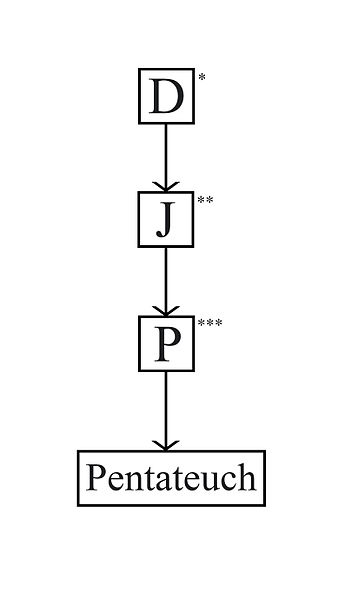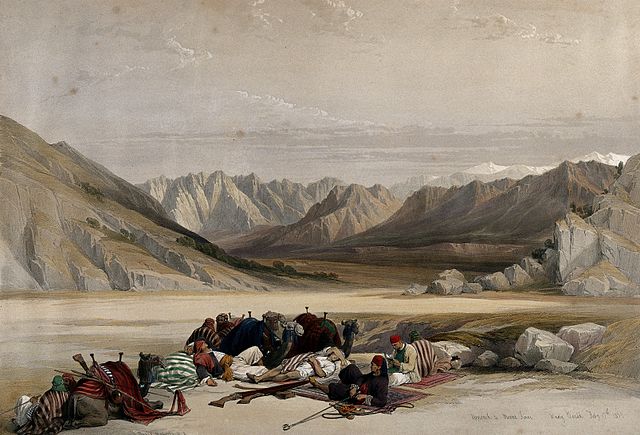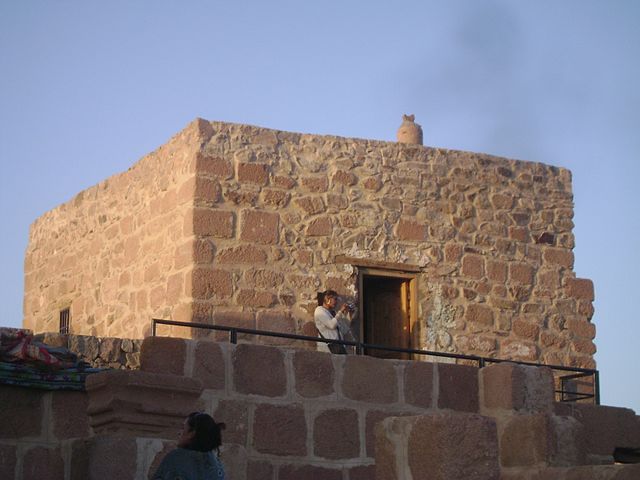The Priestly source is perhaps the most widely recognized of the sources underlying the Torah, both stylistically and theologically distinct from other material in it. It is considered by most scholars as the latest of all sources, and “meant to be a kind of redactional layer to hold the entirety of the Pentateuch together,” It includes a set of claims that are contradicted by non-Priestly passages and therefore uniquely characteristic: no sacrifice before the institution is ordained by Yahweh (God) at Sinai, the exalted status of Aaron and the priesthood, and the use of the divine title El Shaddai before God reveals his name to Moses, to name a few.
Diagram of the supplementary hypothesis, a popular model of the composition of the Torah. The Priestly source is shown as P.
The ending of Exodus 40 and beginning of Leviticus 1, two Priestly texts, in a late thirteenth-century manuscript
Mount Sinai is the mountain at which the Ten Commandments were given to Moses by God, according to the Book of Exodus in the Hebrew Bible. In the Book of Deuteronomy, these events are described as having transpired at Mount Horeb. "Sinai" and "Horeb" are generally considered by scholars to refer to the same place.
Mount Sinai, showing the approach to Mount Sinai, 1839 painting by David Roberts, in The Holy Land, Syria, Idumea, Arabia, Egypt, and Nubia
View down to the Saint Catherine's Monastery from the trail to the summit
A mosque at the top
Saint Catherine's Monastery






